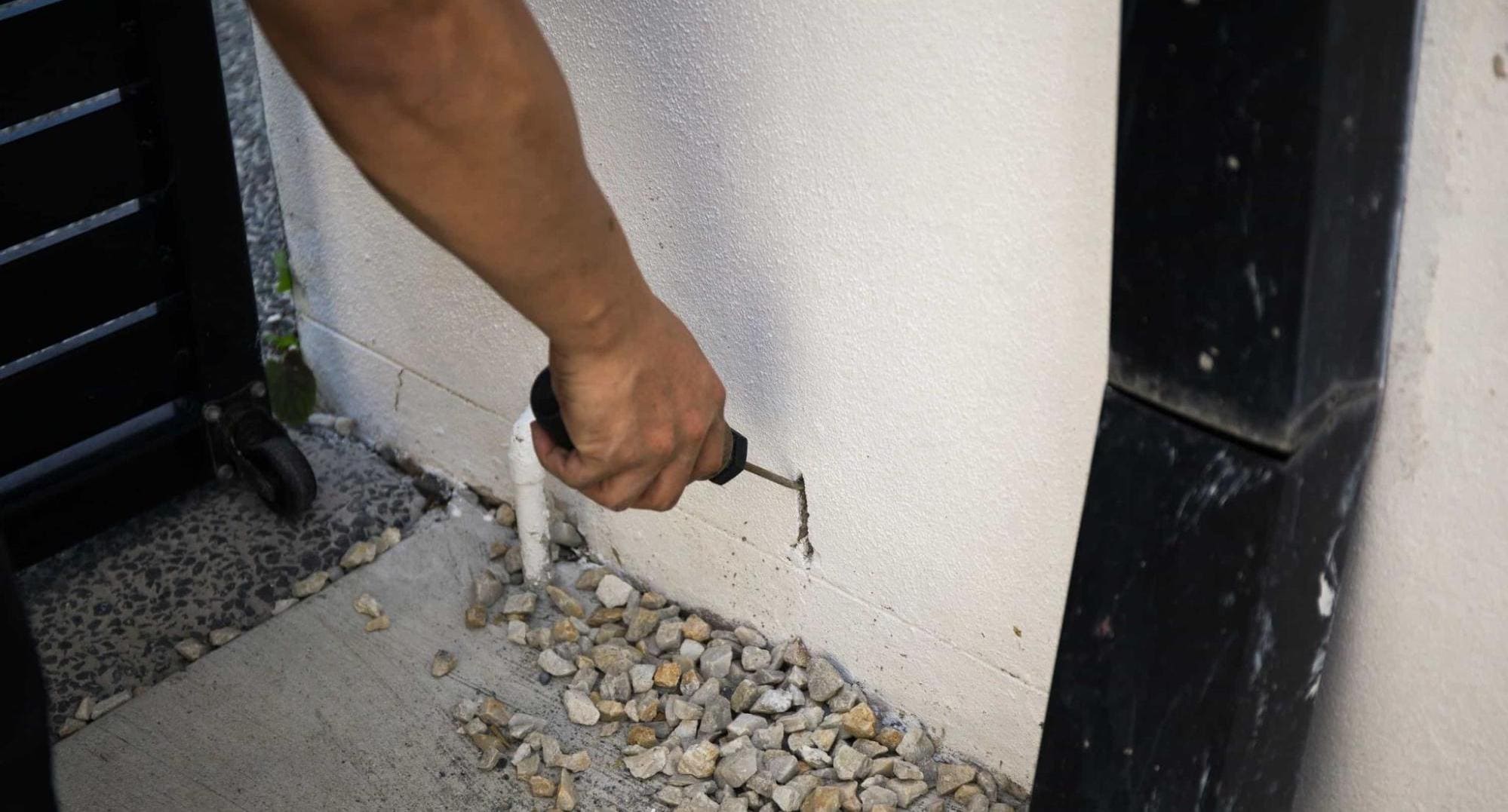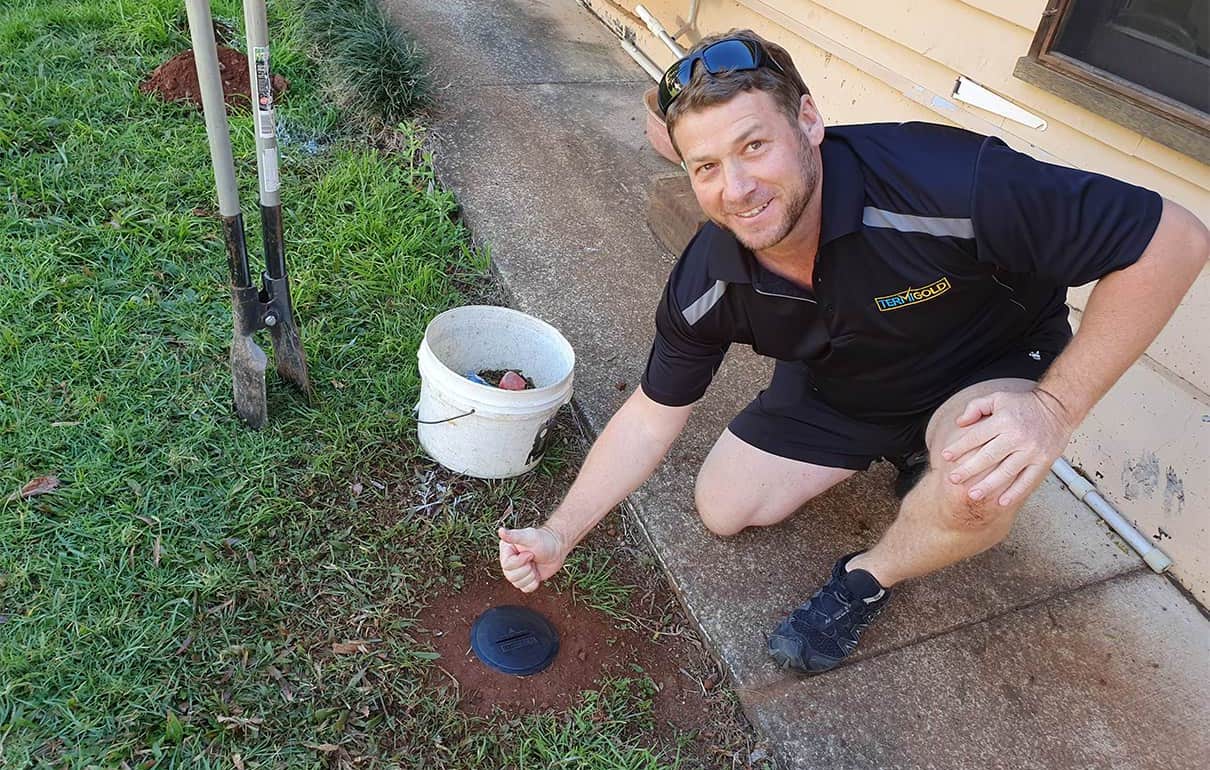Termites, also known as white ants, are found all across Australia and cause thousands of dollars of damage to properties every year. They live in the soil and eat wooden fibres, like the ones that hold up your home. As termite colonies always start outside, it’s important that you regularly inspect your backyard so that it’s doesn’t turn into a white ant garden.
This blog will show you how you can do this yourself using the same techniques as professional pest inspectors and save money. You might also want to check out a blog we did on inspecting inside your home for termites, but today’s focus will be on the outdoors.
What Happens During A Professional Termite Inspection?
Before we get into what you should do, let’s take a look at what a professional inspection involves. So you’ve booked a pest control service to inspect your home for termites — what are they doing? First of all, it’s very valuable to be present while your house is being inspected. You want to be there to ask questions and watch as your house is assessed for termite infestation.
The inspector will come with a range of tools (see list below) and once they’re done inspecting, you’ll get a better idea about the severity of the problem if there is one.
Termite Inspection Toolkit:
- Screwdriver
- Moisture Meter
- Camera
- Tapping Stick
- Torch
- Termite bait
As the inspector moves through the home and garden, they should check (if practical):
- All accessible timbers structures under the house and the roof
- Inside and outside the building and its surrounds
- Hose and taps
- Garden beds, plants and pots
- Fences
- Trees and stumps
- Any other timber structures and trees on the property, up to 50 metres beyond the main building
- The Presence and effectiveness of visible and accessible termite barriers
- The susceptibility of the property to termite infestation (such as subfloor ventilation and drainage, as well as obvious damp areas)
The pest inspection report should include details of the inspected areas, mentioning any areas that were inaccessible. If there were signs of termite activity, they should recommend a termite management plan that details procedures and costs, an assessment of all options and the expected outcomes and limitations.
Now that you know the basics of a termite inspection, we’re going to provide a deep dive into the exact process you can follow to find and kill white ants in your garden.

How To Conduct An External Termite Inspection Yourself
Inspecting the outside of your house is important because it gives you the chance to catch termites before they even get the chance to come inside. It’s also why bait stations are set up outside (more on that later).
Once you have your termite inspection toolkit ready, you can begin walking around the outside of the house. You’ll want to look for dark, hidden and wet places. Termites need food and water to build their mud trails and your home gives them both. Once they enter, they will acquire a taste for the timber and leave a pheromone trail that other colonies can find.
This is why we recommend using bait instead of spraying — they’ll spread the bait between colonies, killing a million instead of a couple thousand. However, there are other factors to consider such as how your home is constructed, the type of soil, incline of the block and any construction flaws. We discussed the benefits and drawbacks of both in-ground bait systems and chemical barriers here.
Inspect Wooden Areas Such As Your Deck and Fence
As you walk around the perimeter of the building, keep a keen eye on wooden areas and tap them to hear for hollow sounds and falling debris. Make sure that any timber decking isn’t damaged and is well ventilated.
Timber fences that rest against the building create a concealed entryway they love to hide under. They can track up from the ground and enter the home through just a 2mm cavity.
Wood is termites main food source so it’s important to check these areas thoroughly.
Check Wet Areas Such As Water Tanks and Taps
Check the outdoor plumbing for any leaks of moisture that are creating stagnant water. If there’s a drip of water, you can bet that white ants will be causing a ruckus somewhere in the area. White ants love water-soaked wood and it’s a prime area for them to make their home.
If you have a water tank, spear water or water well, you will definitely want to inspect it thoroughly. Water tanks that are not plumbed to take overflow to storm drains will leave moisture around the bottom which attracts termites. They also conceal termite entry points if you cannot get behind to look at the back to see signs of activity. Check the plumbing around your water tank and make sure you lead the overflow pipes away from the building.
Other prevention measures you can take are making sure water slopes away from the edge of the house and removing any tree foliage that’s touching the roof. This is because termites can track along the branches and roots of trees, and extend their reach into your home. Also, make sure any garden beds or shrubs are away from the edges of the building and weep holes (the tiny gaps between bricks that let water drain out).
Anything that creates a constant flow of water against the building can be a catalyst for termites. This includes garden taps, plumbing inspection outlets, downpipes, gutters and hot water systems. Keep up the maintenance on them and you will have one less thing to worry about.
Probe Fencing and Retaining Walls
Garden fencing and retaining walls are other great sources of food for termites. They devour the wooden planks from the soil and build their nests. As you inspect, you want to look in all the cracks, probing for termite damage and searching for mud trails.
You Finish Checking For White Ants In The Garden — What Should You Do Now?
Once you finish doing an inspection around the house, it’s time to set up your termite protection barrier.
Install bait stations around your home to intercept foraging termites and monitor any activity by checking the stations every 4 weeks. This termite barrier is designed to protect your home all year round so even if you don’t have active termites internally, by installing the barrier you know you are always one step ahead. Repeat a full inspection of your property every 12 months and sooner if you live in high-termite prone areas.
TermiGold has helped thousands of Aussies take the first steps to protect their home from termite infestations. Get yourself started with Termite Bait Stations or get in touch with one of our friendly team members and we can answer any of your questions.
